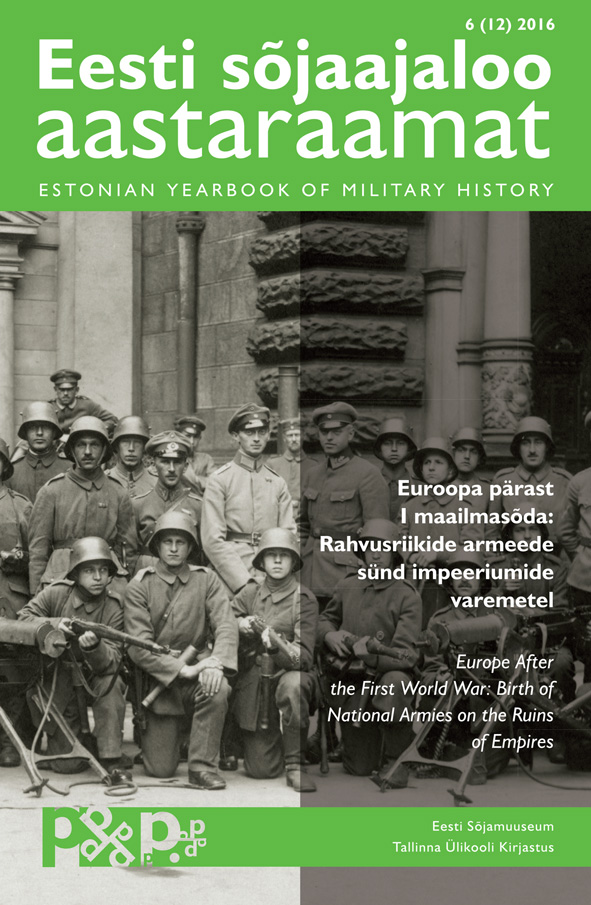Miks mõned riigid otsustavad toetuda paramilitaarsetele üksustele? Jugoslaavia näide pärast I maailmasõda
Why some countries decide to rely on paramilitary units? The example of Yugoslavia after WWI
Author(s): Dmitar TasićContributor(s): Toomas Hiio (Translator)
Subject(s): Geography, Regional studies, Military history, Political history, Recent History (1900 till today), Nationalism Studies, Interwar Period (1920 - 1939), WW II and following years (1940 - 1949), Post-War period (1950 - 1989), Identity of Collectives
Published by: Tallinna Ülikooli Kirjastus
Keywords: paramilitary; Balkan Wars; History of the Balkan countries; World War I; history of Yugoslavia; nation-building;
Summary/Abstract: The article analyses Yugoslavian politics in its border regions aft er WWI, as well as how the authorities took advantage of the local centuries-old paramilitary tradition for the purpose of ensuring order and suppressing resistance movements. Th e core of the approach is made up of examples from three events: suppression of rebellion in northern Montenegro in February 1919, the activities of the Chetniks in Macedonia in the spring and summer of 1919, and the organisation of the supporters of Albanian leader Essad Pasha in 1919–1920. In the Balkan Wars, Serbia annexed large areas which formerly belonged to the Ottoman Empire and were again transferred to Turkish control in WWI. Yugoslavia (Kingdom of Serbs, Croats and Slovenes), which was born aft er the end of WWI, had to strengthen its borders while suppressing the separatism of Macedonians and the conflicts with Albanians and the Montenegro border area clans. Th e situation was further complicated by the fact that neither the Serbs, the Bulgarians nor the Greeks recognised the Macedonians as a separate nation, but as a part of their respective nations. Th ere were also conflicts between the Serbs, the Croats, the Slovenes and the Bosnian Muslims.
Journal: Eesti Sõjaajaloo Aastaraamat
- Issue Year: 6/2016
- Issue No: 1
- Page Range: 136-163
- Page Count: 28
- Language: Estonian

